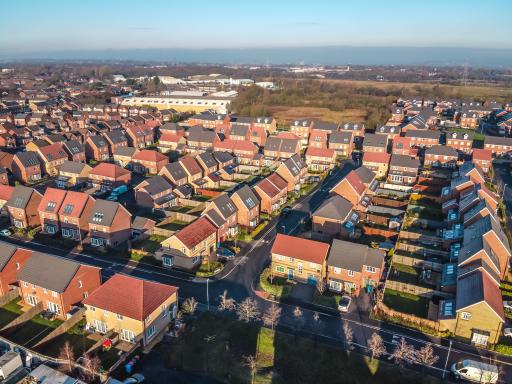Eliminating Racial Disparities in Housing
Housing instability continues to be a challenge in Michigan, disproportionately impacting communities of color around the state.
Housing instability continues to be a challenge in Michigan, disproportionately impacting communities of color around the state.

Housing instability continues to be a challenge in Michigan, disproportionately impacting communities of color around the state.
An organization in Kent County is combating housing instability and working to eliminate racial disparities. It recently established a community plan and common agenda to address these issues.
The Housing Kent Organization, a network of community stakeholders creating a more comprehensive housing system driver by community data that prioritizes equitable housing access in Kent County, is supported by several CMF members including Frey Foundation, Grand Rapids Community Foundation, Wege Foundation, DeVos Family Foundation and Jandernoa Foundation.
Lynne Ferrell, CMF Board chair and program director, Frey Foundation, also serves on Housing Kent’s Board of Trustees.
KConnect, Kent County’s backbone organization for the community’s Collective Impact initiative, facilitated a two-year collaboration of numerous cross-sector stakeholders in the community to create a community plan to address systemic issues in housing stability and racial and ethnic disparities.
Data from the state shows that in 2020, Black residents made up 46% of the population experiencing homelessness despite accounting for only 14% of the overall population.
According to a press release from KConnect, the number of people in the homeless system grew by 37% in Kent County between 2017 and 2019, primarily impacting families with children. Nearly one in six Black children in Kent County accessed the homeless system at some point in 2019 compared with one in every 130 White children.
The Equity and Community Engagement Plan, developed through the work of Housing Kent, is designed to build a framework for how to move individuals and families most affected by housing instability into decision-making power within the system. The plan outlines five areas that should be targeted to promote a more equitable housing system.
1. CARES (Coronavirus Aid, Relief, and Economic Security) Act funding should be directed to Kent County on-the-ground organizations working with residents on housing issues.
2. Hire community coordinators, who are members of the directly impacted communities, to be situated in every housing organization.
3. Utilize the Appreciative Inquiry Model, created through this process, to create a training structure for community coordinators to build capacity to authentically and effectively engage with residents.
4. Ensure ongoing, meaningful implicit bias training for all stakeholders within the housing ecosystem.
5. Create a better and more thorough understanding of an individual’s housing situation by using a common intake form that includes detailed questions related to housing and homelessness.
A shared measurement system that focuses on the housing spectrum from “No-Housing” to “Housed by Choice” has also been established.
According to KConnect, this spectrum helps to ensure that planning efforts and strategy development is inclusive of the entire continuum, as each housing situation is interrelated to the others and therefore best served by a holistic approach.
Housing Kent will work alongside existing efforts and organizations to create alignment within the county’s current approach to homelessness. This approach will develop a comprehensive housing system resulting in an over one-third reduction of children and adults needing to access the homeless system in Kent County.
As part of the equity and community engagement plan outlined within the roadmap, Housing Kent will partner with organizations like the Urban League of Western Michigan and the Hispanic Center of Western Michigan to serve as intermediaries between the system and the community to include the voices of residents at decision-making tables.
Want more?
Read more about the Housing Kent Organization.
Learn more about the Housing Stability Spectrum.